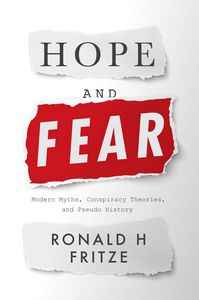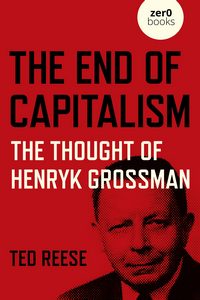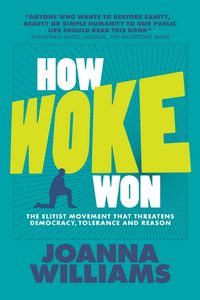Book reviews: Hope & Fear / End of capitalism / War on Woke
 Why do people believe strange things?
Why do people believe strange things?
Hope and Fear. Modern Myths, Conspiracy Theories and Pseudo-History. By Ronald H. Fritze. Reaktion Books. 2022. 271pp.
It is an idea frequently expressed that people need myth to make sense of their own lives and the world around them. Otherwise why would we have worship of non-existent gods, devotion to human leaders sometimes considered divine themselves, or the idea that one’s accidental country of birth somehow makes that place superior to others? In Hope and Fear Ronald Fritze investigates such myths, such ‘invented knowledge’, as he calls it, and does so in a way that manages to be both massively scholarly in its detailed and comprehensive analysis of the phenomena in question, exhilarating, and indeed often entertaining in the reflections and observations it throws off.
On the one hand, with his tongue firmly in his cheek, the author asks questions like: ‘Is a secret and corrupt Illuminati conspiring to control world affairs and bring about a New World Order? Was Donald Trump a victim of massive voter fraud? Is Queen Elizabeth II a shape-shifting reptilian alien? Who is doing all this plotting?’ On the other hand, the depth of his knowledge and serious analysis of fringe ideas and conspiracies throughout history is little short of breathtaking in its detail and profundity. His study ranges from enduring earlier myths such as the Ten Lost Tribes of Israel, the Knights Templar and the ‘Red Jews’ to later myths of race and nation such as the rise of ‘national sovereignty’ as ‘a source of pride and comfort’ for citizens of newly established states and the continuing belief among some in the anti-Semitic and entirely discredited Protocols of the Elders of Zion. In the 20th century, he examines, among much else, the Nazis’ pseudo-science of Aryanism, and persistent fascination with the so-called alien landings at Roswell in New Mexico. And over most recent times he considers theories of 9/11 as an ‘inside job’, Obama’s supposed ‘foreign’ birth, the contortions of QAnon, ‘Covid hoax’ notions and Alex Jones’s outrageous fictions. He concludes that when such ‘junk knowledge’ spreads, ‘facts, reality and truth fall by the wayside’ and what people come to believe ‘bears little or no resemblance to scientific or historical reality’. So, for example, belief in anti-Trump voter fraud, though conclusively and incontrovertibly debunked, continues to survive against all the evidence via a process the author calls ‘belief perseverance’ which persists even in the face of solid contradictory information and facts.
What to make of all this? Clearly belief in myth, conspiracies and pseudo-history has a long record in human affairs and seems to occur especially at times of tumult and social upheaval, perhaps an expression of despair by people who feel impotent to influence events or their own lives. People engage in ‘confirmation bias’. They cherry-pick the evidence to support their beliefs in wonder, domination conspiracies or the supernatural, or they simply engage in wishful thinking, and fevered imagination takes precedence over any rational thought leading in some cases to what the author, in his chapter on the rise and ideology of Nazism, calls ‘a road to perdition’.
It is true, as history has shown and this book ably illustrates, that this can lead to whole societies going down such roads. And this may seem depressing. But perhaps a gleam of light is to be found in the fact that, in the most socially and economically advanced parts of the world, the kind of myths, conspiracy theories and pseudo-history portrayed here are rarely shared by whole populations as often as they were in the past. What happens now rather is that they tend to exist among a certain segment of the population, usually a particularly downtrodden one, who find their own existences particularly confusing, stressful and alienating and so seek consolation in conspiracy theories often coupled with retrograde political beliefs, which, as the author points out, tend to have an affinity for each other. So maybe we should see just a little progress here in terms of social development providing at least the ground for progress of the wholly different, non-conflictual and cooperative way of organising human affairs that socialists advocate and look forward to.
HOWARD MOSS
What law of breakdown?
 The End of Capitalism, The thought of Henryk Grossman By Ted Reese, Verso, 2022. Paperback, £13.99
The End of Capitalism, The thought of Henryk Grossman By Ted Reese, Verso, 2022. Paperback, £13.99
‘Breakdown theory’ was a speciality in German-speaking Marxist circles. The revisionist Eduard Bernstein threw down the gauntlet in 1899 when he stated that capitalism would never break down of its own accord.
One of the first to take up the challenge and try to show that it would was Rosa Luxemburg. Another was Henryk Grossman. He agreed with Luxemburg that, if it couldn’t be demonstrated that capitalism would collapse, then the case for socialism would become just a moral one, but disagreed with her proposed solution. His argument, as set out in 1929 in his The Law of Accumulation and Breakdown of the Capitalist System, was that capitalism would collapse economically because eventually a point would be reached when not enough profits would be generated to keep capital accumulation going.
Grossman was born in 1881 in Kracow, now in Poland but then part of the Austro-Hungarian Empire. He joined the local Social Democratic Party and was active in agitation amongst Yiddish-speaking workers. After the war he found himself in Poland where he joined the Communist Party but, facing persecution, had to leave in 1925. He emigrated to Germany where he took up a post with the Institute of Social Research (Frankfurt School) for whom his book on the collapse of capitalism was written. He was always a sympathiser of the Communist Party and the USSR, though as Reese shows by no means an uncritical one, and in 1949 moved from the US to East Germany where he died in 1950.
To demonstrate his theory about capitalism eventually reaching a point where there would not be enough profits to continue capital accumulation, he accepted the assumptions made by the Austrian Social Democrat, Otto Bauer, to refute Luxemburg. The most important were that the accumulation of what Marx called ‘constant capital’ (machines, factories, materials, etc) would increase at 10 percent a year but that the amount (mass) of surplus value would increase at only 5 percent. The rate of exploitation (the ratio of surplus value to capital invested in hiring wage-workers) was assumed to be constant.
On the basis of these assumptions he was able to demonstrate mathematically that after 35 years capitalism would collapse because it would not be able to maintain a 10 percent annual increase in constant capital. By then the rate of profit would have fallen below 10 percent, which meant the mass of profits generated was below the level required to increase capital invested in machinery, etc by 10 percent. He called this ‘over-accumulation’.
This conclusion was in fact built into the assumption that the amount of profits would increase at a slower rate than the amount of constant capital (the figures don’t matter as long as the increase in profits is slower). This meant that the rate of profit would gradually fall from year to year. This would not be a problem as long as the amount of profits was greater than the amount of constant capital required. But, as soon as the rate of profit fell below the rate of increase of the constant capital, the increase in the amount of profits would not be enough.
The question that arises is how realistic were the assumptions on which Grossman’s based his ‘law of breakdown’.
It is obvious that the rate at which capital can accumulate must depend on the mass of profits made since that is where the additional capital comes from. The argument seems to be that competition forces capitalist enterprises to introduce more efficient machinery so as to stay in the battle of competition and that this sets the pace of capital accumulation, a pace that could come to be greater than the amount of profits available for this. This could happen in theory but not for long. If it did happen this would provoke an economic crisis but not the collapse of capitalism.
In practice, productivity increases at a rate of around 2 percent a year. There is no reason to suppose that the amount of profits could not – and has not – increased at a similar rate, especially as the rate of exploitation does not remain constant but goes up over time. In any event, capitalism has not collapsed through there not being enough profits to continue accumulation.
Reese seems to think that ‘the absolute limit to the accumulation of capital’ has already been reached. The evidence he presents for this is mainly about world debt levels which have, in his view, become unsustainable and will soon lead to global hyperinflation. Grossman would have expected ‘absolute over-accumulation’ to result in steadily growing unemployment, but that is not happening today.
Despite this, Reese’s work is a basic introduction to the life and views of Grossman.
ALB
Really That Dominant?
 How Woke Won: the Elitist Movement that Threatens Democracy, Tolerance and Reason. By Joanna Williams: Spiked. £9.99.
How Woke Won: the Elitist Movement that Threatens Democracy, Tolerance and Reason. By Joanna Williams: Spiked. £9.99.
According to one definition, a woke person is someone who is ‘very aware of social and political unfairness’ (Collins English Dictionary). Joanna Williams, however, uses the term in a very negative way, to refer to those who are obsessed with race and gender, and support cancel culture. Woke values supposedly ‘dominate every aspect of our lives’ and, while there is no grand conspiracy, the ‘cultural elite’ accept woke thinking as common sense. The woke project is described as an attack on the working class (not defined, but probably manual workers).
She is not at all clear as to who comprises this cultural elite. It is a ‘manifestation of the state’, it includes non-governing elites and even a sub-elite. It consists of the ‘professional-managerial class’, and runs business, academia, the church, mainstream and social media; its members work in HR departments and the cultural industry, and as doctors and teachers. It is hard to take seriously this depiction of a group which is allegedly so powerful but is characterised in such a vague way.
Having said that, there are some good points here. The kind of threats made against JK Rowling and others for saying that trans women are not women are indeed indefensible. This is not a matter of disagreement or argument but of intolerance and intimidation. Students can sometimes be unwilling to accept the expression of views they dislike. ‘Woke capitalism’ can promote gender inclusivity, for instance, as a way of selling razor blades or deodorant.
Yet there is also much that is objectionable, sometimes a matter of the omission of obviously relevant points. Williams mentions that journalist Suzanne Moore resigned from the Guardian after being bullied by colleagues, presumably for not expressing acceptably woke views, but does not say that Jeremy Hardy and John Pilger were barred from the paper for being too ‘radical’. In other cases, what is said is inconsistent. For instance, it is claimed that the supposed existence of institutional racism in the police moves policing ‘into the realm of politics’. Yet a few pages later it is said that the police now have new ways of pursuing old goals, effectively defending the interests of the ruling class (which is also political, after all).
Woke is allegedly a counter-revolution to the populism of Brexit. The election of Trump in 2016 is said to have shown the rejection of woke values in the US: as if voting for a racist, sexist, lying bully was an endorsement of tolerance and reason. The ‘political consensus’ is also said to be challenged by the internet publication Spiked (spiked-online.com), which Williams writes for, and also by the TV and radio channel GB News, which is largely a forum for such as Nigel Farage.
Overall, Williams says nothing about the lack of democracy under capitalism, and is just arguing for one establishment view against another that is to a large extent manufactured by its opponents.
PB
Next article: 50 Years Ago: The ABC of inflation / Earth notes / For the record ⮞
